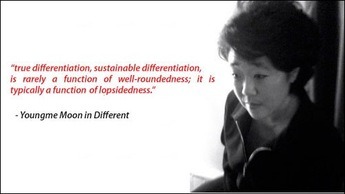A virtual mirror allows someone to use a camera and have that image displayed on a large LED screen. Better yet, with the right software, it can change the image. With that ability, virtual mirrors have been used to see what new glasses look like or to try on dresses – a virtual, flexible fitting room.

Virtual mirrors and their equivalent as smart phone apps have been around for the last couple of years. There are examples from all over the world. Here are just a couple:
- Fitnect and DigitalDM to try on clothing [See https://youtu.be/1jbvnk1T4vQ and https://vimeo.com/112664683
- EZface for makeup
- Ray-Ban for glasses


Marketers have already thought of extending this to social media, as one newspaper reported with a story titled “Every woman’s new best friend? Hyper-realistic new virtual mirror lets you to try on clothes at the flick of the wrist and instantly share the images online”.
This all provides a nice experience for customers and may even help sell a particular item to them. But that’s only the beginning.
Virtual mirrors are a tremendous source of data about consumer behavior. Consider that the system can record every item the consumer looked at and then what she or he bought. Add to that the information about the person that can be detected – hair color, height, etc. With the application of the right analytics, a company can develop insights about how and why some products are successful – for example a particular kind of dress may be what short or tall women are really looking for.
With eye tracking devices, such as those from Tobii, connected to the virtual mirror, even more data can be collected on exactly what the consumer is looking at – for example, the last part of a dress that she looked at before deciding to buy or not to buy.
Going beyond that, an analysis can be done of facial (and body) expressions. I’ve written before about affective computing which is the technology is developing to do and to respond to this kind of measurement.
[For some additional background on affective computing, see Wikipedia and MIT Media Lab’s website.]
By fully gathering all the data surrounding a consumer’s use of the virtual mirror, its value becomes much more than merely improving the immediate customer experience. In a world of what many consider big data, this adds much more data for the analytics experts on the marketing and product teams to investigate.
Alas, I haven’t seen widespread adoption and merger of these technologies. But the first retailer to move forward this way will have a great competitive advantage. This is especially true for brick-and-mortar retailers who can observe and measure a wider range of consumer behavior than can their purely e-commerce competitors.
16.00
Normal
0
false
false
false
EN-US
X-NONE
X-NONE
/* Style Definitions */
table.MsoNormalTable
{mso-style-name:”Table Normal”;
mso-tstyle-rowband-size:0;
mso-tstyle-colband-size:0;
mso-style-noshow:yes;
mso-style-priority:99;
mso-style-parent:””;
mso-padding-alt:0in 5.4pt 0in 5.4pt;
mso-para-margin:0in;
mso-para-margin-bottom:.0001pt;
mso-pagination:widow-orphan;
font-size:10.0pt;
font-family:”Calibri”,sans-serif;
mso-bidi-font-family:”Times New Roman”;}
© 2017 Norman Jacknis, All Rights
Reserved






